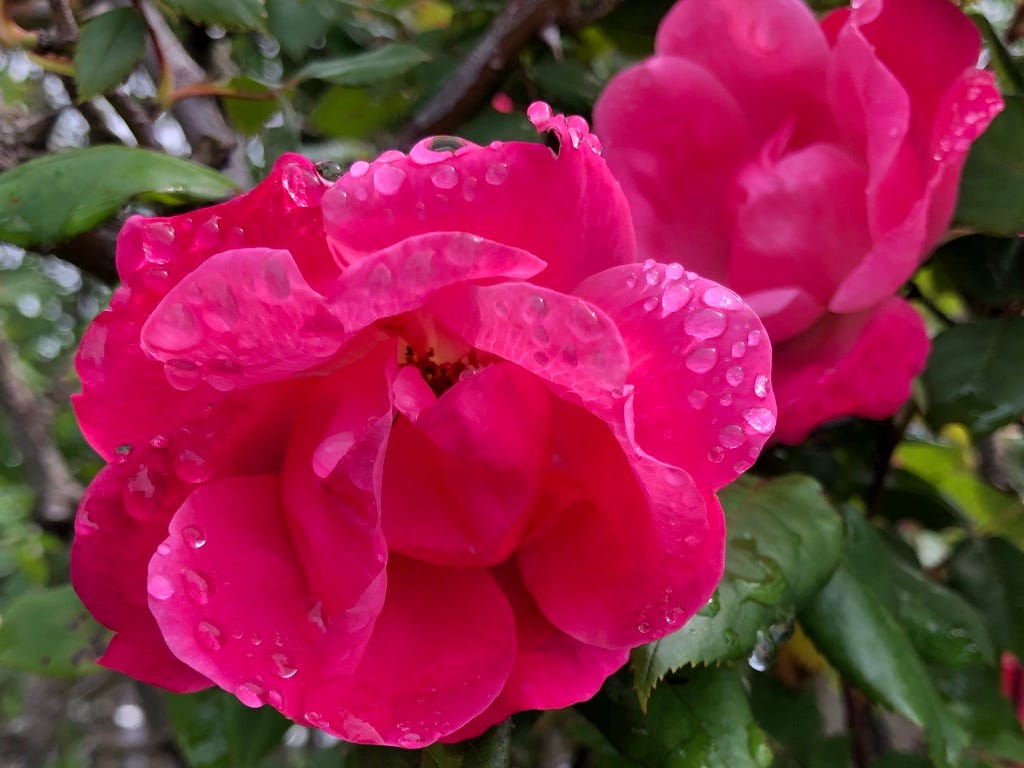Flowers
She clapped her hands, she whirled around, she moved from one part of the room to another, drawing deep breaths, beaming.
“It’s so bright!” she said. “And it’s so — tiny.”
“It is small,” said Herb, uncertain again.
“Not small,” said Lorna. “Tiny. It’s wonderful. It’s like playing house, just like playing house. And look! Roses outside the window!”Herb ’n’ Lorna, Chapter 8
Various folk cultures and traditions assign symbolic meaning to the rose, though these are seldom understood in-depth. Examples of deeper meanings lie within the language of flowers, and how a rose may have a different meaning in arrangements. Examples of common meanings of different coloured roses are: true love (red), mystery (blue), innocence or purity (white), death (black), friendship (yellow), and passion (orange).
If one symbol represents love, power, royalty, beauty, sensuality, and mysticism–it is the rose. Also known as “the queen of flowers,” the flower as we know it dates back to at least the oligocene epoch (about thirty-three to twenty-three million years ago). While much like camellia and azalea, it most certainly originated in the area that now corresponds to Southwest China, it has appeared across cultures since 3000 BCE. This slide show will focus on the prominence of roses in Western art from the first millennium BCE to the twenty-first century CE.
Angelica Frey, “Rose Symbolism Throughout Art History,” in Art&object

See also: Flowers TG 135
[more to come on Tuesday, July 26, 2022]
Have you missed an episode or two or several?
You can begin reading at the beginning or you can catch up by visiting the archive or consulting the index to the Topical Guide.
You can listen to the episodes on the Personal History podcast. Begin at the beginning or scroll through the episodes to find what you’ve missed.
You can ensure that you never miss a future issue by getting a free subscription. (You can help support the work by choosing a paid subscription instead.)
At Apple Books you can download free eBooks of “My Mother Takes a Tumble,” “Do Clams Bite?,” “Life on the Bolotomy,” “The Static of the Spheres,” “The Fox and the Clam,” “The Girl with the White Fur Muff,” “Take the Long Way Home,” “Call Me Larry,” and “The Young Tars,” the nine novellas in Little Follies, and Little Follies itself, which will give you all the novellas in one handy package.
You’ll find an overview of the entire work in An Introduction to The Personal History, Adventures, Experiences & Observations of Peter Leroy. It’s a pdf document.








